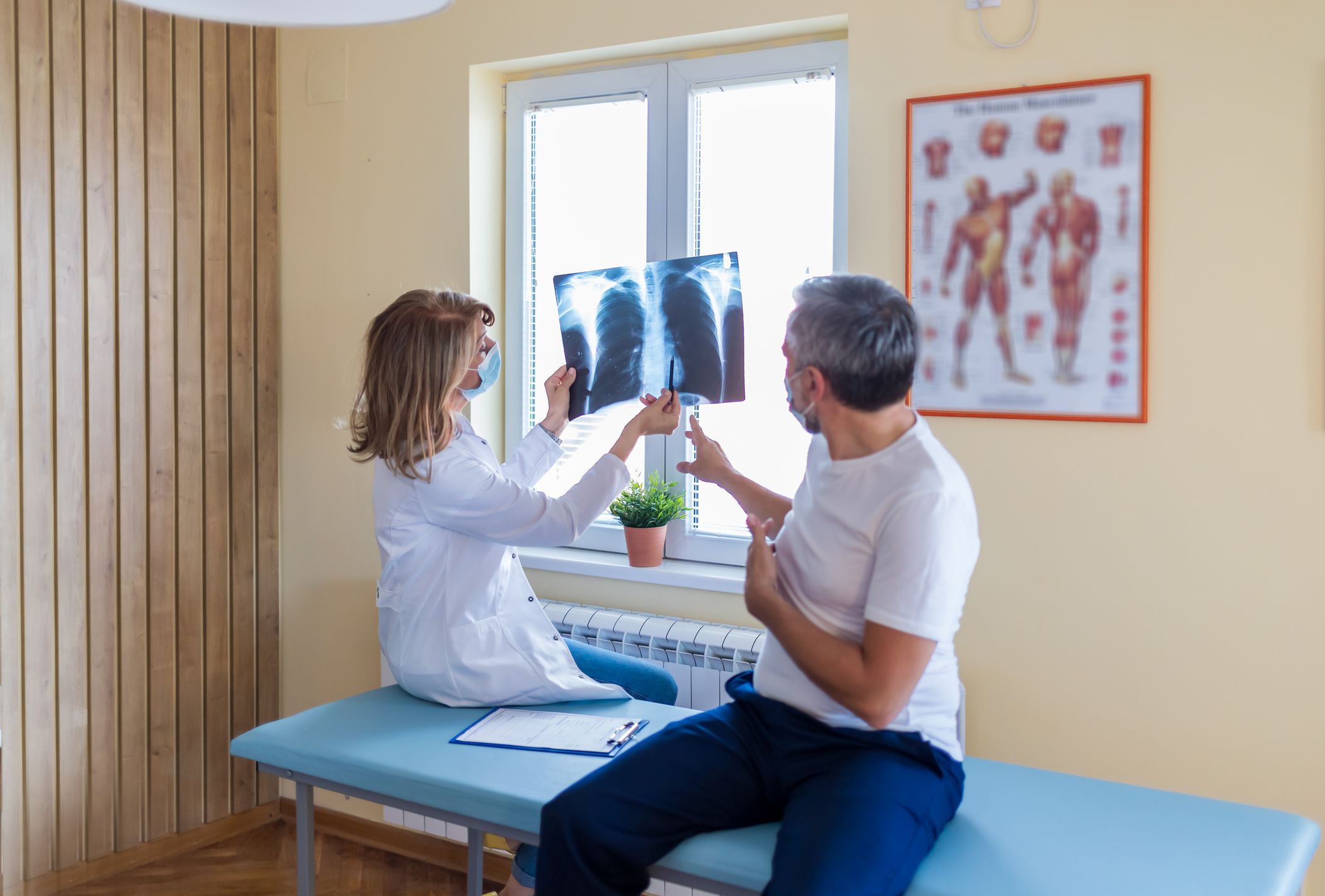Pneumonitis is a clinical term that refers to inflammation of the lungs. More specifically, it refers to inflammation of the air sacs (also called alveoli), which are the point where oxygen passes from the lungs into the bloodstream. When air sacs become inflamed, they fill with fluid and white blood cells and it becomes more difficult for oxygen to get into the bloodstream.
Typically, healthcare providers use pneumonitis when referring to inflammation that is caused by things like allergic reactions, side effects from drugs, or inhaling irritants. It is more common to refer to inflammation caused by disease and infection as pneumonia (though pneumonia is a type of pneumonitis).
Pneumonitis is a potential side effect for several therapies used for treating advanced non-small cell lung cancer (NSCLC). These include chemotherapy, radiation therapy, and immunotherapy.
Here, we look at the symptoms of pneumonitis, its relationship with cancer therapies, and how it is treated.
Symptoms
Shortness of breath and a dry cough are the most common symptoms of pneumonitis. Other symptoms include low blood oxygen levels, fever, muscle aches, fatigue, chest pain, headaches, and weight loss.
Severity can vary, and symptoms can also persist and get worse with time. Pneumonitis can cause serious complications, including permanent scarring in the lungs (called pulmonary fibrosis) and fluid filling the lungs. Though it is not common, pneumonitis can be fatal.
Pneumonitis and radiation therapy
Radiation therapy uses powerful X-rays to kill cancer cells and shrink tumors. There are a number of techniques to administer radiation to a tumor site, but the most commonly used for lung cancers is external beam radiation.
Pneumonitis that is caused by radiation therapy is called radiation pneumonitis. It can occur within weeks or months following radiation therapy, but it can also occur later. It tends to affect the area of the lung that has received radiation therapy.
Pneumonitis and chemotherapy
Chemotherapy drugs use powerful chemicals to kill cancer cells. Chemotherapy is a systemic treatment, which means it acts on cancer cells throughout the body (versus external beam radiation, which is localized to a specific site in the body).
Pneumonitis is a side effect of certain chemotherapy drugs for some patients. With chemotherapy, the inflammation tends to affect multiple lobes and both lungs. It can begin within days after starting chemotherapy.
Chemotherapy and radiation therapy can be used in combination with one another—an approach called chemoradiation therapy or chemoradiotherapy. Using both therapies together may increase the risk of pneumonitis.
Pneumonitis and immune checkpoint inhibitors
Immune checkpoint inhibitors are a type of immunotherapy. Like chemotherapy drugs, immunotherapies are a systemic treatment. Unlike chemotherapy drugs, immunotherapies do not target cancer cells directly, but help the immune system better identify and target cancer cells. Pneumonitis occurs in a small percentage of people using these cancer therapies, though researchers do not yet understand why this occurs.
Treating pneumonitis
If you are being treated for NSCLC your healthcare team will monitor for signs of pneumonitis and other side effects. This may include a variety of tests that measure breathing and blood oxygen levels. It may also include bronchoscopy and biopsy, as well as chest X-rays and CT scans to look for inflammation in the lungs.
Remember, you are an important source of information for your healthcare team, and it is important to communicate with your healthcare team about any changes in symptoms and any side effects.
Treatment for pneumonitis will depend on the severity. It may include oxygen therapy to improve oxygen levels, corticosteroids to reduce inflammation, and medicines that help a person breathe better, such as bronchodilators.






